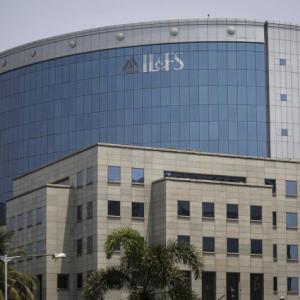Given that there are hundreds of players in the shadow banking space, it’s hard to make a credible estimate of potential NPAs. That creates more scope for panic, says Devangshu Datta.

The government is intervening to try and contain the IL&FS default crisis.
Is this India’s “too big to fail” moment?
That reference to the US-led subprime crisis of 2008 may sound excessive until you realise that sentiment across the NBFC sector is tied to effectively quarantining IL&FS and ensuring that default from there doesn’t cause contagion in the form of cascading defaults from creditors who in turn, will find it hard to service their debts.
Problems in the financial sector cause more long-term grief than problems elsewhere.
India already has an ongoing banking crisis. The IL&FS collapse could trigger a crisis in the NBFC sector.
Since the vast majority of IL&FS’ exposures are tied to infrastructure, it could cause problems there as well. Indeed, it already has.
India’s NBFCs (increasingly referred to as “shadow banks” now, as in Chinese parlance) perform a vital role.
The specialised ones, such as Power Finance Corporation or IL&FS, concentrate on specific sectors.
Since they have less in the way of regulatory controls than conventional banks, they can lend to long-gestation projects with less restraints.
But as this case shows, there can be awful asset-liability mismatches because NBFCs can't raise long-term funds and their cost of funding is high.
Other NBFCs perform an equally vital role in offering a range of products and services to households and SMEs.
These range from housing mortgages, to loans against gold, to vehicle finance and EMI-based loans for other consumer durables.
EMI-led consumption is a pretty common feature across the Indian economy.
The recent selloff in Dewan Housing Finance (DHFL) was a sign of increasing nervousness. DSP sold some corporate paper from DHFL at a discount and that led to the stock taking a beating.
The IL&FS crisis has now made investors even more nervous.
Given that there are hundreds of players in the shadow banking space, it’s hard to make a credible estimate of potential NPAs. That creates more scope for panic.
The cost of financing for NBFCs may rise, since they will be forced to offer higher yields on funds they raise.
Of course, they will pass on those costs in the form of higher interest charged.
In turn, this could hit consumption. Households would just be gearing up to make their durables purchases for the year and many wannabe consumers would be unhappy about paying higher interest on EMIs.
Consumption could be hit anyway due to the recent ill-advised tariff hikes on imports.
While the intention may be to compress non-essential imports, it will inevitably lead to inflation as tariffs will be added to costs.
Another cause for worry on the inflation front was the slightly deficient monsoon.
Food inflation has ruled easy for several months but could start to spike now if production was lower than anticipated.
The other volatile inflation component, energy, is going to be a source of inflation anyhow.
Crude prices could continue to rise due to Iran being pushed out of the export market by sanctions and OPEC nations refusing to scale up production to meet that supply gap.
Plus, there’s the escalating trade war between the US and China.
There are also worries on the currency front.
The US Federal Reserve has not only raised rates, for the third time in succession; it has signalled that it will raise rates five more times in the next 18 months.
Moreover, it is in the process of “Quantitative Tightening”, getting rid of much of the debt bought during the long period of Quantitative Easing (QE) The European Central Bank is likely to taper its ongoing QE from December.
A tighter hard-currency situation with higher yields will mean more pressure on the rupee, which is already facing massive redemptions from foreign portfolio investors.
In the midst of all this, the RBI has a very ticklish job at its Policy Review this month.
On the one hand, it has to balance a falling rupee, and a rising current account deficit.
A second consideration is the need for liquidity in the bond market, given the IL&FS situation.
Domestic inflation is low but there are reasons to suspect it will climb as food, fuel and consumer durables get more expensive.
So the RBI’s Monetary Policy Committee is quite likely to raise rates.
However, the RBI is also easing the liquidity conditions by carrying out its own version of QE and buying bonds to push rupees into the bond market via open market operations.
A QE or “accommodative stance” as it’s called coupled to a rate hike might look like strange monetary policy but we could well see this situation prevailing.
Corporate results will start coming through in the next fortnight. They should be reasonably good because a positive base effect will still be in force.
Valuations have come down as the market corrected.
The Nifty is trading at around PE 23 if we adjust for consolidated earnings.
Mid-caps and small-caps have lost a lot more ground than the Nifty.
Technically, this correction halted at above 10,750, which is approximately where the 200 Day Moving Average is placed. Here’s hoping for a rebound.
Photograph: Reuters










